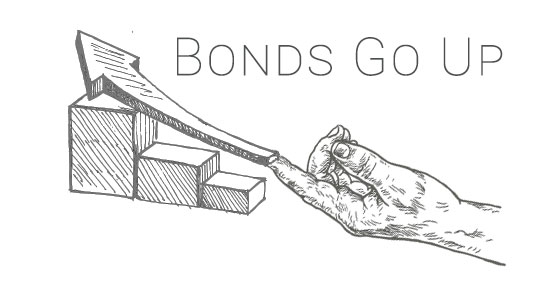Bond Investment Strategies
SHARE THIS GUIDE
The same concept behind Nike iD trainers applies to bonds. The product’s the same but you can tweak it according to your lifestyle. So, depending on your personal investment goal, here are three different ways to invest in bonds. If you have no idea what a bond is, STOP and read What is a Bond?
#1 Buy and Hold
If you want to guarantee you won’t lose more money than you originally invested and you want regular interest payments too, you would buy and hold the bond until it matures.
When you buy and hold you don’t need to be too concerned about the bond price changing in-between because at maturity you’ll receive the face-value of the bond. However, you should check the bond price and yield before buying to be sure you’re happy with the return you’ll make. Also, look at the risks – is the company behind the bond financially sound? If not, are you being rewarded enough for the risk you’re about to take?
#2 Maximising Income
When you see these words together think risk. In the financial world risk is linked with (potential) high rewards. You may want to put some of your money in higher risk investments but not all of it!
As a rule of thumb, longer term bonds pay more and so do bonds from ‘riskier’ companies. A good example right now is oil companies. You might have heard that the price of oil has fallen a lot in the last two years. This affects companies involved in the oil industry and the bonds from these companies are currently trading at a huge discount.
Example please!
Today you can buy Premier Oil Finance Ltd’s bonds for £87 and in three years’ time, when the bond matures, you'll get £100 back for it. Until then you'll also receive 5% interest a year on the issue price! So say you purchased 100 of these bonds, it would cost you £8,700 (100 times £87). You'll be paid back £10,000 at maturity, making £1,300 and until then you'll receive £500 interest each year (5% of £10,000). That’s a total of £2,800 over three years, which is an excellent return but you have to lend to a ‘riskier’ company.
These highly discounted bonds (hence highly risky) giving possible decent returns are often labelled as “junk bonds”.
#3 Taking a View on Interest Rates
If you have a view on the direction of a country’s interest rates you can trade this through bonds. When interest rates go down, existing bond prices tend to go up because the interest rate they offer becomes more attractive. The opposite is also true - when interest rates go up bond prices tend to fall because the interest they offer isn’t great.
Please explain in real terms
Say you’re pessimistic about the future of a country’s economy – for example, straight after the Brexit vote in 2016 - and you believe the Central Bank of that country (in this case, the Bank of England) will reduce interest rates. You may want to buy UK-related bonds in the expectation that their price will rise. On the other hand, if you already own the bond you'll want to hold onto it and reap the benefits as interest rates fall and your bond’s price rises.


